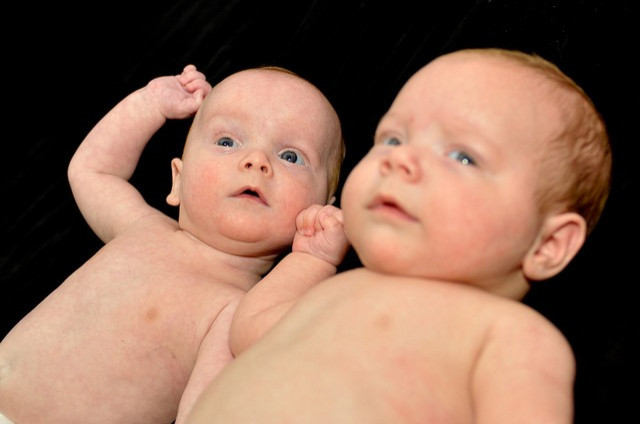A Womb With Two Very Different Views

The distance of a few inches can mean a world of difference for your DNA. New research examining pairs of twins found that despite the fact that babies shared the same womb and had nearly identical DNA, slight differences in maternal environment left their mark.
Writing in the journal Genome Research, a team led by Jeffrey Craig and Richard Saffrey of Australia's Murdoch Childrens Research Institute describe how DNA profiles taken from the placenta, umbilical cord tissue and cord blood of newborn fraternal and identical twins showed that even the closest siblings start growing apart very early.
The research implies that twins, like the rest of us, sit in their own amniotic sac and have their own individual experiences, Craig said in a phone interview.
The key is epigenetics, the process by which environmental factors influence the regulation of genes - turning some on, others off, or bumping production of a gene product up or down.
Craig likens epigenetics to an orchestra. Liver cells are different from brain cells, just as oboists are different from violinists. There's a comprehensive score of the music that's to be played (a person's genome), but there are defined parts for each section. In most classical music performances, the oboist doesn't wander into the strings section and start playing that part, nor does he wrest a violin away and attempt to solo.
Epigenetics is how cells play their particular piece of music, Craig says. Some genes are played higher or lower. Overall you get this symphony.
The primary way that cells 'play' the genes epigenetically is through a process called DNA methylation, which adds little chemical flags on the DNA sequence that affect gene activity.
Craig and Saffrey's team found that even in identical twins, there can be widespread differences in the patterns of DNA methylation. They think that seemingly little differences - the relative position in the uterus, the partitioning of nutrients between twins - could contribute to these epigenomic differences.
Sometimes one placenta could be in the best place in the womb, while the other twin might be shunted off to the side somewhere, Craig says.
Previously, scientists knew that a mother's diet and lifestyle could influence her child's DNA. Children born to starving women in the Netherlands during the Dutch famine of 1944 had a lower birth weight and tended to have persistent health problems sixty years later.
In 2008, researchers from Columbia University and Leiden University Medical Center in the Netherlands found that children conceived during the famine had different DNA methylation patterns for a gene called IGF2, which is involved in human growth and development, compared to siblings that weren't exposed to the famine in the womb.
Examining the epigenome may eventually yield valuable medical insights. Those methylated genes that Craig and Saffrey's team examined are associated with birth weight, but are also known to play a role in metabolism and cardiovascular disease.
This has potential to identify and track disease risk early in life, or even to modify risk through specific environmental or dietary interventions, Saffrey said in a statement on Sunday.
SOURCE: Gordon et al. Neonatal DNA methylation profile in human twins is specified by a complex interplay between intrauterine environmental and genetic factors, subject to tissue-specific influence. Genome Res. published in advanced 16 July 2012.
© Copyright IBTimes 2024. All rights reserved.











